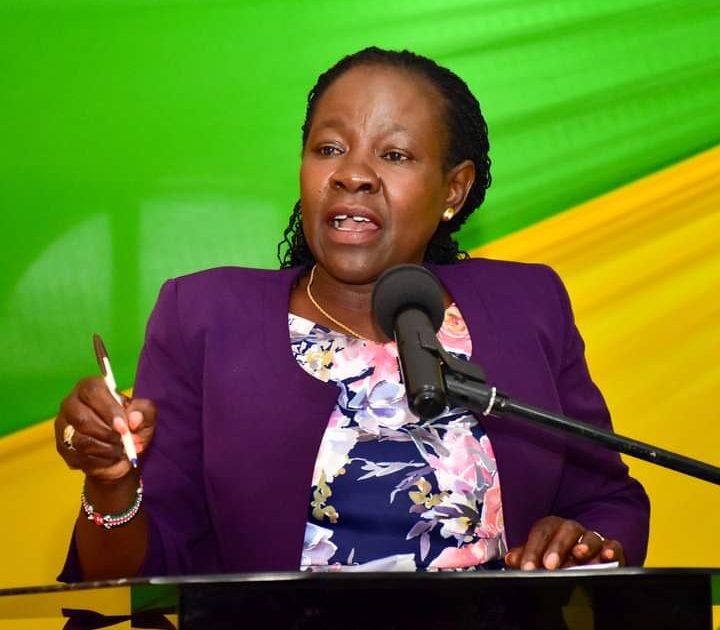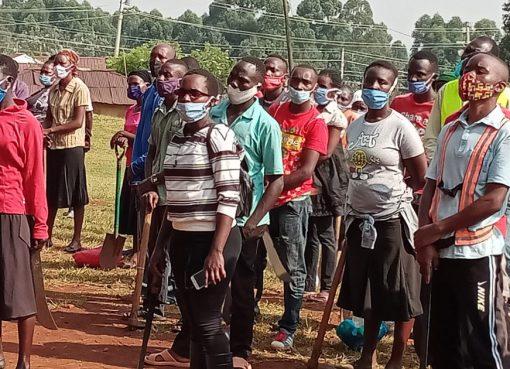State Department for Technical, Vocational Education and Training (TVET) Principal Secretary Dr Esther Muoria has urged the private sector to team up with TVETs countrywide to hasten the realization of dual training.
Dr Muoria says that whereas the state department has laid the foundation for the full implementation of Competency-Based Education and Training (CBET) curriculum which is anchored on the acquisition of practical skills, TVETs and industry need to collaborate to ensure learners access practical knowledge from the industries.
“Industry and TVET have to work together for two pertinent reasons; one, we need to have pools of skilled young people because this is how Kenya is going to get industrialized. Once the world knows we have skilled people in Kenya, they will come and invest and our young people will get jobs,” Dr. Muoria said.
“The second reason we are doing this, is because labour is needed out there. The world doesn’t have young people to work for it. We therefore need to work together to skill these young people so that they can go out there and work,” added Dr Muoria.
Also known as work-integrated learning, dual training combines classroom learning with practical work experience. The model was launched in June last year as a way of making vocational training less theoretical and more needs-based.
Under the model, 50-70 percent of training takes place in the workplace while 30-50 percent is taught in class.
The Ministry of Education had envisioned that through the partnership, TVETs would focus on training learners for specific industries and the training offered would be tailored to meet the current labour market demands. The trainees would also get exposed to the actual work conditions and get hands-on experience from the experienced staff in the sectors.
Dr Muoria was speaking in Nyeri during a stakeholders meeting organised by the Nyeri National Polytechnic for its industry partners with the view of fostering their collaboration in dual training.
She said that her department was working on a framework that will strengthen the collaboration between the private sector and the training institutions.
The PS noted that an Industry Liaisons Office had already been set up to coordinate the industry linkages.
According to the PS, the office will also ensure that the graduates are equipped with industry-driven skills to help them navigate both the local and international labour market.
“What I am waiting for is the Industrial Linkages Policy to get done so that we can invite stakeholders before I upstage it to Cabinet. Once it is before the cabinet, they will be able to tell us how we will incentivize the industry to work with us,” said Dr Muoria.
The workshop was attended by the GIZ-Kenya TVET project manager, Hort Bauernfiend, the Counselor, Skills Development and Job Creation at the Finnish Embassy, Matts Weurlander, Nyeri Governor, Mutahi Kahiga and his deputy Warui Kinaniri.
Others in attendance were principals of various Technical Training Institutes, representatives from the Kenya National Chamber of Commerce and Industry as well as local banks and Saccos operating in the county.
Governor Kahiga underscored the importance of the partnership between industry and TVETs in transitioning tertiary education from a theory-based to practical-based approach. Kahiga said that through such partnerships, learning institutions would align their training to the demands of the job market and in turn increase the employability of the graduates.
“We must participate fully and ensure we have created a feedback mechanism so that we develop usable consumables. Dual TVET training is wholesome learning and it is going to call for all of us to cooperate, participate and work together. That way, we will end up producing employable graduates and not people who have papers but cannot do something tangible for us,” said Kahiga.
By Wangari Mwangi and Samuel Maina




